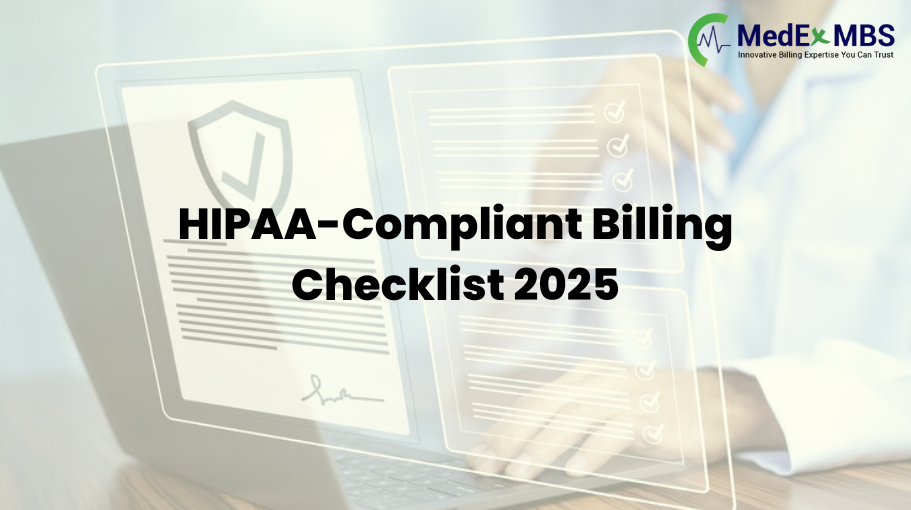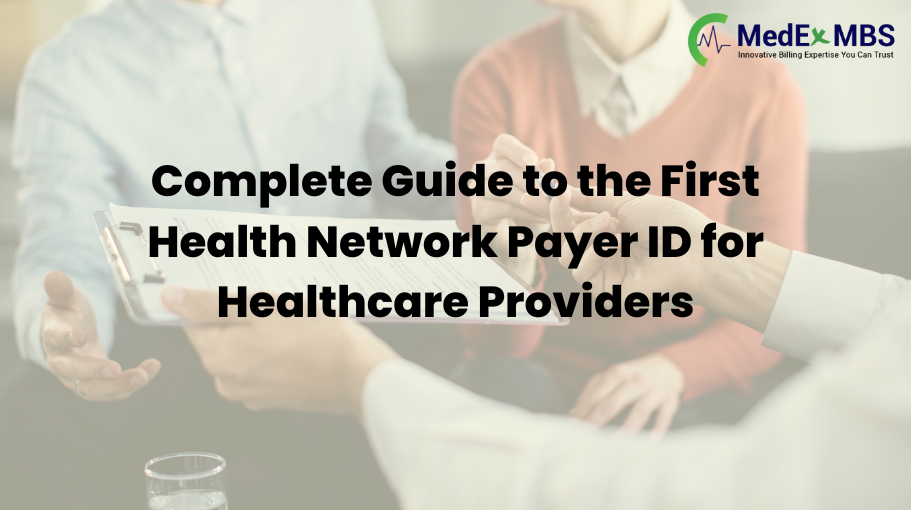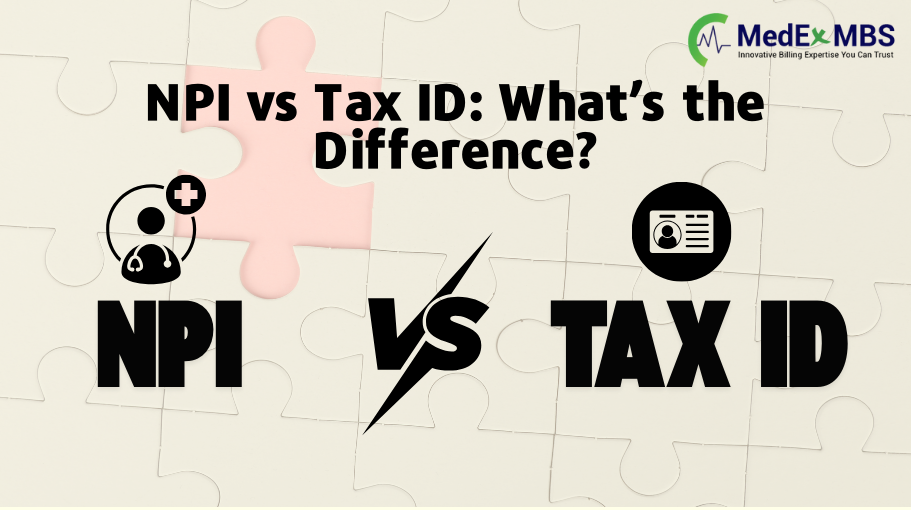Maximizing Reimbursement for New Patient Visits: CPT Code 99203

The 99203 code pertains to outpatient visits for new patients that necessitate a comprehensive history, examination, and low complexity decision-making. Correct application of this code will facilitate payment and prevent claims-related issues. This article will elucidate the components, time requirements, and frequent errors associated with the 99203 code, enabling you to utilize it accurately. Quick Hits The 99203 code is designated for new patient outpatient visits that demand a detailed medical history, examination, and low complexity medical decision-making for billing and compliance purposes. Accurate documentation of the essential components: patient history, physical examination, and medical decision-making is imperative for the application of CPT code 99203 and to ensure payment. Remaining informed about coding guidelines, reimbursement rates, and the application of modifiers such as 25 is crucial for precise billing and enhancing patient care and satisfaction. What is CPT Code 99203 CPT code 99203 is applicable for outpatient visits involving new patients that require a comprehensive medical history, examination, and low complexity medical decision-making. This code is relevant when the patient has not consulted the physician or another physician of the same specialty and group within the past three years, including other outpatient visit circumstances. This aspect is vital for coding and billing as it guarantees that the services rendered comply with the American Medical Association (AMA) standards. For the 99203 code, the necessary care components include a medically appropriate history, a detailed examination, and low complexity medical decision-making. These elements are essential to validate the code and receive payment for the services rendered. Grasping these components is crucial for coding and billing services and ensuring a seamless reimbursement process. The 99203 code serves as a fundamental element of medical coding that underpins the documentation and billing of initial patient visits. Proper utilization of this code guarantees coding compliance and enhances overall patient care by maintaining clear medical records. 99203 Components To bill under 99203, healthcare providers are required to document the following components. First, the patient’s medical history must be recorded, which includes: The patient’s chief complaint History of present illness Review of systems Past medical, family, and social history This serves as the foundation for understanding the patient’s current health status and potential risk factors. Next, a physical examination is necessary. It should be comprehensive, covering multiple organ systems, or a detailed examination of a single organ system if required. This examination provides a holistic view of the patient and aids in identifying any abnormalities that may require further investigation or treatment. The medical decision-making process for 99203 is classified as low complexity. This indicates that the decisions involved are not intricate. The provider must assess the patient, contemplate treatment options, and make decisions that are less complex than those associated with higher-level codes. Documenting this decision-making process is crucial as it substantiates the use of 99203 and the associated billing. Time Considerations for 99203 Time is an important factor in billing for 99203. Patient visits billed under this code generally last between 30 to 44 minutes. This duration encompasses face-to-face interaction with the patient as well as any additional time spent on the patient’s case, such as reviewing medical records or coordinating care with other providers. Accurate documentation of time is essential to demonstrate the level of care provided during 99203 visits. The documentation should clearly indicate the amount of time spent with the patient and the services rendered. This ensures that the billing accurately reflects the time and effort invested in patient care. Furthermore, precise time tracking supports the level of service billed and minimizes the risk of audits and denied claims. It reinforces the provider’s request for payment and guarantees that they receive compensation for the care they have delivered. 99203 vs 99204 vs 99205 Distinguishing between 99203 and the other new patient codes, 99204 and 99205, is essential for accurate billing and coding. 99203 pertains to low complexity, 99204 to moderate complexity, and 99205 to high complexity. Recognizing these distinctions aids in selecting the appropriate code for the patient visit. The duration of the encounter also differs among the codes. For instance, 99203 requires 30-44 minutes, while 99204 necessitates 45-59 minutes. These time specifications are crucial for selecting the correct code and ensuring that the billing accurately reflects the level of service provided. When selecting a code for billing, providers should take into account the complexity of medical decision-making, the thoroughness of the history and examination, and the time spent with the patient. By doing so, they can guarantee that the chosen code accurately represents the services rendered and facilitates payment. 99203 Documentation Accurate and comprehensive documentation is vital for successful billing of 99203. Providers must ensure that their documentation captures the depth of the history and examination. This encompasses the patient’s chief complaint and the history of the present illness. Additionally, it should include a review of systems and any pertinent past medical, family, and social history. Furthermore, providers should systematically document the medical decision-making process to substantiate the complexity of the patient’s condition. This involves assessing the patient’s status, weighing treatment options, and articulating the rationale for the selected plan of care. Such detailed documentation not only supports the application of 99203 but also safeguards against claim denials. Failure to align documentation with the billed level of service can lead to significant issues, including denied claims and audits. Therefore, providers must adhere to proper documentation practices to ensure their billing is precise and compliant with coding standards. 99203 Errors Billing mistakes are prevalent in the healthcare sector, and the 99203 code is no different. A frequent error involves billing this code for established patients rather than new patients, which may result in audits and penalties. Ensuring that the patient qualifies as a new patient is essential for accurate billing. Another error is the incorrect application of the 99203 code, which can lead to reduced reimbursement and diminished patient satisfaction due to inadequate service quality.
Frequent HCPCS Coding Errors in Radiology Billing and Strategies to Prevent Them

Radiology practices frequently neglect to apply separate charges for essential items, including imaging supplies, contrast dye, and radioactive tracers, as their attention is primarily directed towards the main scans and diagnoses. When personnel fail to bill for these expensive materials, practices experience revenue loss and face the risk of compliance violations. A single mistake in billing for a radioactive tracer can result in costs exceeding $1,000 per study. With Medicare reimbursement rates projected to decrease by approximately 2.9% in 2025, these HCPCS challenges are increasingly significant for radiology professionals. This guide outlines prevalent HCPCS challenges and effective strategies to address them. Why is HCPCS Essential in Radiology Billing? CPT codes document the procedures performed, such as MRI scans, CT studies, or PET scans. In contrast, HCPCS codes account for the materials utilized, such as the $2,000 PET tracer, the $300 gadolinium injection, or specialized catheters. Failing to include these supply codes results in the expensive materials being treated as practice overhead rather than being compensated for. This issue is a common occurrence in radiology. Practices tend to concentrate on the high-cost imaging procedures while disregarding the costly materials that enable those procedures to be performed. The most frequent areas where practices incur revenue losses include: Contrast Agents Each type of contrast requires specific HCPCS codes that depend on its composition and delivery method. Gadolinium-based MRI contrast necessitates different codes compared to iodinated CT contrast. Utilizing generic codes instead of the specific agent codes leads to systematic underpayments. Radiopharmaceuticals PET imaging depends on costly tracers that come with intricate billing regulations. Some codes charge per study dose, irrespective of the millicuries used, while others charge per millicurie administered. This differentiation influences whether you bill for one unit or fifteen units for the same injection. Interventional Supplies Catheters, guidewires, and specialized devices employed during interventional procedures are often eligible for separate billing. Omitting these charges can convert profitable procedures into scenarios where the practice breaks even or incurs losses. Frequent HCPCS Coding Errors in Radiology Billing The following outlines the most common HCPCS errors encountered in radiology billing, along with their respective solutions. Incorrect Units for Radiopharmaceutical Billing Radiopharmaceutical codes adhere to distinct billing regulations that many practices misinterpret, resulting in considerable revenue loss. The Issue Certain codes bill “per study dose, while others bill “per millicurie. Code A9503 encompasses up to 30 millicuries but bills as a single unit, irrespective of the actual quantity utilized. Numerous practices mistakenly bill 15 units when administering 15 millicuries. The Resolution Educate staff to distinguish between “per study dose” and “per millicurie” descriptors. Develop quick reference cards that outline unit rules for frequently used radiopharmaceuticals. Insufficient Documentation for High-Cost Tracers Unlisted tracer codes necessitate comprehensive documentation that many practices neglect, leading to claim denials. The Issue Codes such as A9598 require documentation of the product name, NDC number, dosage, and invoice cost. The absence of any of these elements results in denials. Random audits demand invoice verification, and incomplete records necessitate the repayment of received funds. The Resolution Establish documentation templates for unlisted codes. Mandate the inclusion of invoice copies and complete product information before billing any NOC radiopharmaceutical codes. Billing for Contrast When It Is Already Included Payer bundling regulations differ significantly, confusing regarding when contrast can be billed separately. The Issue Certain payers bundle MRI contrast into procedure payments. Billing it separately breaches contracts and initiates compliance reviews. Each payer has varying bundling rules that are subject to change quarterly. The Resolution Keep up-to-date bundling reference guides for major payers. Review payer updates every quarter and modify billing protocols accordingly for each contract. Insufficient Contrast Documentation Details Inadequate contrast documentation hinders accurate HCPCS coding and leads to systematic revenue loss. The Issue The type and quantity of contrast must be recorded in the technique section prior to the addition of supply codes. Incomplete information regarding specific contrast agents, volumes given, or methods of delivery hinders precise HCPCS code selection and reimbursement. The Resolution Mandate that technologists record the precise type of contrast, volume, and method of administration. Develop standardized templates for documenting contrast in imaging reports. Prior Authorization Shortcomings for High-Cost Agents High-priced radiopharmaceuticals and contrast agents frequently necessitate prior authorization, which practices often neglect to secure. The Issue Advanced PET tracers, which cost between $3,000 and $5,000, require pre-approval before administration. The absence of authorization results in automatic denials, irrespective of medical necessity. Emergency studies exacerbate this issue when time constraints prevent authorization requests. The Resolution Establish pre-authorization tracking systems for high-cost agents. Confirm coverage before scheduling and maintain databases for authorizations with tracking for expiration. Billing System Mapping Mistakes Chargemaster systems frequently misclassify procedures under incorrect HCPCS codes, leading to systematic billing inaccuracies. The Issue Technical personnel document bilateral imaging on charge tickets, yet billing systems assign unilateral procedure codes. Therapeutic infusions are incorrectly categorized under hydration codes. These mapping inaccuracies result in consistent underbilling across numerous claims. The Resolution Perform quarterly audits of the chargemaster with both clinical and billing personnel. Cross-verify charge ticket descriptions against the actual HCPCS codes in your billing system. When discrepancies are identified, promptly update mappings and utilize test claims to validate corrections before implementation. Volume Calculation Errors Inaccurate dosage calculations result in incorrect unit billing and substantial revenue discrepancies. The Issue Per-milliliter codes necessitate accurate volume calculations. Billing practices that charge per vial rather than the actual milliliters administered overlook potential revenue. Additionally, the requirements for waste documentation further complicate the precise determination of units for costly agents. The Resolution Educate staff on the differences between per-unit and per-volume billing. Establish protocols for verifying dose calculations. Ensure proper documentation of waste for high-cost radiopharmaceuticals. Incomplete Invoice Records for Audits The absence of invoice documentation poses a risk during payer audits and
Changes in OB GYN Billing Global Periods: What You Need to Know

Only one specific area has been modified. In 2025, new telehealth CPT codes were introduced; however, the adoption by Medicare remains limited. Being aware of these updates safeguards your revenue and ensures compliance, as improper obstetric global billing consistently ranks among the leading causes of claim denials. What is a Global Period in OB GYN? Global-period billing includes prenatal, delivery, and postpartum services consolidated into a single bundled reimbursement for obstetrical care. Instead of billing individually for each prenatal appointment, delivery, and postpartum care, you submit one all-encompassing code that addresses the complete pregnancy experience from the initial prenatal visit to the concluding postpartum examination. The global package typically includes postpartum care for six weeks following delivery, after which additional visits necessitate separate billing. This is distinct from surgical global periods that utilize specific day counts, such as 10-day or 90-day periods. OB-GYN global billing encompasses the entire range of routine pregnancy care, irrespective of duration. Core Codes You Need to Know Global Package Codes Utilize when your practice provides comprehensive pregnancy care: 59510: Cesarean delivery with complete care. 59610: Vaginal birth after previous cesarean with complete care. 59618: Cesarean after attempted VBAC with complete care. Component Codes Utilize when you only manage part of the pregnancy care: 59409/59514: Delivery only (vaginal/cesarean). 59425: Antepartum care, 4-6 visits. 59426: Antepartum care, 7+ visits. 59430: Postpartum care only. Decision Rule: Did you only manage certain aspects while other providers took care of different parts? Utilize component codes. New Telehealth CPT Codes with Limited Medicare Recognition New CPT codes have been introduced for the year 2025, which include 98000-98007 (audio-video), 98008-98015 (audio-only), and 98016 (brief communication). These codes inherently represent telehealth services and do not necessitate modifier 95. However, Medicare currently acknowledges only 98016; 98000-98015 are not reimbursable by Medicare (although some commercial plans may cover them). Virtual consultations that are included in standard prenatal or postpartum care continue to be part of the global package. They cannot be billed separately merely because they are performed through telehealth. However, telehealth consultations for complications or issues that fall outside the standard global package may be billed separately using the relevant evaluation and management codes or code 98016 when applicable. What Did NOT Change? CPT codes remain unchanged from 2024. Global package regulations have not altered. Bundling principles remain consistent. The regulations regarding split and shared visits will persist from 2024, upholding the same substantive portion requirements and the use of modifier FS (applicable only to facility settings). Services that were eligible for separate billing in 2024 will remain eligible for separate billing in 2025. Telehealth Rules for 2025 Bundled services will remain bundled irrespective of the delivery method. Routine prenatal telehealth appointments, virtual postpartum check-ups, and standard pregnancy education sessions held online are encompassed within your global package payment. What Can You Bill Separately? Telehealth visits addressing complications. Virtual care for unrelated medical issues. Coding Requirements Utilize service code 02 for alternative telehealth locations or 10 for a patient’s residence. For traditional E/M codes, most commercial insurers require modifier 95, although Medicare requirements differ by MAC. The recently introduced telehealth CPT codes (98000-98015) do not necessitate the use of modifier 95, as telehealth is inherently encompassed within the code description; nevertheless, it is crucial to highlight that Medicare does not recognize these codes. Important Note Medicare’s expanded telehealth flexibilities (including home as the originating site) are effective until September 30, 2025. Code 98016 supersedes HCPCS G2012 for brief communications. Making the Right Choice: Global vs Component Codes Use Global Codes When Your practice manages the entire pregnancy. Use Component Codes When The patient transitions between practices. You only perform delivery without providing prenatal care. Another practice manages postpartum care. Real Examples A patient moves to a different location during pregnancy: The initial practice charges for the antepartum code, whereas the new practice charges for the global code. Hospital delivery involving a different obstetric group: The prenatal practice charges for the antepartum code, while the hospital group charges for the delivery-only code. You handle the call and provide an unknown patient: Charge the delivery-only code. Essential Modifiers for 2025 Essential Modifiers You Should Use Modifier 25: Significant, separately identifiable E/M service on the same day as another procedure (note that this modifier is often misapplied in OB claims, so ensure proper documentation). Modifier 95: Telehealth services when utilizing traditional E/M codes (not required for new telehealth-specific CPT codes). Modifiers That Don’t Belong on OB Claims Modifier 90: Laboratory services for reference (not applicable during global periods). Modifier 91: Laboratory tests repeated (not applicable during global periods). These laboratory modifiers are irrelevant to obstetric global billing and can cause confusion in claims. Understanding Various Payer Requirements Medicare’s Strategy for OB Global Billing Medicare employs the “MMM” indicator for obstetric global packages, setting them apart from surgical global periods. Telehealth coverage remains available until September 30, 2025, allowing patients to access services from home without geographic limitations. Commercial Insurance Differences Many insurers align with Medicare’s guidelines but may exhibit particular variations: The precise number of postpartum visits included. Distinct telehealth stipulations. State-specific regulations (such as North Carolina’s new F-codes effective after July 1, 2025). It is essential to confirm the policies of individual payers instead of presuming consistent coverage. How to Accurately Bill for OB/GYN in 2025? Standard Pregnancy Care The patient receives comprehensive prenatal care, undergoes delivery, and completes postpartum care within your practice. Code: Employ the correct global code (59400, 59510, etc.) Mid-Pregnancy Transfer If a patient transfers to your practice at 28 weeks, you will provide continuous care and delivery. Code: Apply the global code as you have delivered significant antepartum care along with the delivery. Telehealth for Postpartum Complications Should a patient experience postpartum depression necessitating a virtual consultation beyond standard care? Code: Utilize the appropriate E/M code
HIPAA-Compliant Billing Checklist 2025

The complexity of HIPAA-compliant billing has increased significantly. In 2024, healthcare data breaches affected over 133 million records, and enforcement fines consistently exceeded $1 million for each violation. Healthcare organizations are encountering serious risks in this environment. The situation became even more complicated in 2025 when the Department of Health and Human Services (HHS) introduced the first significant update to the Security Rule since 2013. This update includes mandatory multi-factor authentication, encryption requirements, and much stricter oversight of vendors. For those managing a billing department, this means navigating evolving regulations while ensuring smooth operations and the protection of patient data. Regardless of whether you operate a small practice or a large healthcare provider, understanding these changes is crucial to avoid costly penalties and maintain patient trust. How Does HIPAA Influence Medical Billing? Let us begin with the fundamentals. It is essential to understand who is affected by HIPAA and how billing is integrated into these regulatory requirements. Who Must Comply with These Regulations Covered Entities: This includes healthcare providers, health plans, and clearinghouses that manage electronic health transactions. Business Associates: These are vendors and consultants who handle protected health information (PHI). The Three Primary Rules That Affect Billing Privacy Rule: Governs the usage, sharing, and disclosure of patient billing information. Breach Notification Rule: Outlines the procedures for reporting data breaches related to billing records and specifies the timing for such notifications. These regulations work in concert to ensure the security of patient data throughout the entire HIPAA-compliant billing process, from claim submission to payment processing. New HIPAA Compliance Obligations for 2025 The regulatory landscape has undergone significant changes this year. Significant Modifications to Security Regulations (January 2025) Mandatory Multi-Factor Authentication: Now a requirement for accessing the billing system Required Encryption: Both stored and in-transit data must be safeguarded Annual Penetration Testing: Yearly security assessments and biannual vulnerability scans are necessary 24-Hour Vendor Notifications: Business partners must inform you within a day if an issue arises Stricter Enforcement OCR investigations increased by 264% following the ransomware incidents of 2024 More severe penalties if patients experience delays in obtaining their billing records New 6-year mandate for retaining all compliance documentation These modifications have shifted the guidance from “you should probably do this” to “you absolutely must do this.” Proactively addressing these changes is essential to avoid penalties. 10-Point HIPAA-Compliant Billing Checklist for 2025 Conduct a Comprehensive Risk Assessment and Map Your Systems Begin with an exhaustive Security Risk Analysis that specifically targets your HIPAA-compliant billing systems. Document every piece of technology that interacts with electronic protected health information (ePHI) – including practice management systems, clearinghouses, vendor platforms, and more. Create a detailed map illustrating the flow of patient information throughout your billing process, from initial registration to the receipt of the final payment. It is advisable to update this map annually or whenever you introduce new billing software, alter your procedures, or engage new vendors. Your documentation should address the likelihood of various threats, the vulnerabilities identified, and the specific strategies you employed to mitigate each risk. Establish Multi-Factor Authentication (No Exceptions) The upcoming changes to the 2025 Security Rule make it abundantly clear: multi-factor authentication is no longer optional. Anyone accessing billing systems containing ePHI is required to implement it. Deploy it throughout the HIPAA-compliant billing infrastructure: Practice management systems Electronic health record platforms Clearinghouse portals Vendor billing applications Email systems that manage PHI Ensure that individuals are required to verify their identity through at least two methods (password plus phone or app verification). Your MFA system must integrate seamlessly with the existing workflows of your billing team – security measures should not hinder productivity. Encrypt All Data All ePHI within HIPAA-compliant billing must be encrypted, whether it resides on your servers or is transmitted between systems. This includes data stored on servers, laptops, mobile devices, and backup systems, as well as any information exchanged between systems, vendors, and clearinghouses. Verify that your billing software, practice management system, and third-party applications utilize robust encryption (AES-256 at a minimum). The 2025 regulations mandate encryption as a necessity, rather than a luxury. Regulate Access to Information (And Terminate It Promptly) Implement stringent controls so that your HIPAA-compliant billing team can only access the PHI necessary for their specific roles. Establish various user categories such as: Claims processors (limited to claim preparation and submission) Payment posters (focused on payment and adjustment tasks) Billing managers (granted full access along with audit capabilities) Crucially, you must have procedures in place to revoke access within one hour when an employee departs or changes positions. This swift termination of access is a significant aspect of the proposed 2025 updates and prevents unauthorized individuals from accessing sensitive billing information. Develop Your Emergency Response Strategy and Vendor Notification System Formulate a strategy specifically addressing HIPAA-compliant billing security issues, system breaches, ransomware incidents, and unauthorized access to PHI. Your strategy must delineate clear responsibilities, notification timelines, and recovery procedures. Revise every Business Associate Agreement to ensure that vendors are obligated to inform you within 24 hours if they activate their emergency protocols. Organize Your Security Assessments The proposed 2025 Security Rule mandates regular assessments that extend beyond basic risk evaluations. Ensure that a thorough penetration test of your HIPAA-compliant billing systems is conducted annually by certified security professionals. Additionally, perform vulnerability scans biannually to identify potential weaknesses within your network. Document all findings and the corrective actions taken. These records demonstrate your proactive management of security when regulators conduct inquiries. Monitor Everything and Conduct Regular Reviews Enable comprehensive logging across all HIPAA-compliant billing systems to monitor who accesses PHI, the timing of such access, and the actions taken. Your logs should include: Attempts to log in and access patterns Modifications to PHI and adjustments to claims Changes to system settings Unsuccessful access attempts and security notifications Review these logs monthly for any irregularities and perform formal compliance evaluations at least once a year. These assessments ought
Complete Guide to the First Health Network Payer ID for Healthcare Providers

Electronic claims processing serves as the essential foundation of a healthcare practice’s revenue cycle. With over 4 billion healthcare claims processed annually in the United States, it is essential to use the correct payer ID to guarantee prompt payments. The FHNP ID acts as the key for providers to achieve efficient billing and minimize administrative burdens. Providers working in conjunction with First Health networks necessitate particular technical information to ensure that their claims are directed to the correct destination. This guide encompasses all necessary information, from the primary payer ID number to regional coverage differences, enabling medical billing professionals to confidently submit electronic claims. Key Points The network includes providers from First Health, First Choice of the Midwest, and Cofinity. Both Professional/1500 and Institutional/UB claims are accepted The network spans most US states with regional variations Overview The primary payer identification number for Health First Health Plans is 95019. Whether you are submitting Medicare claims or commercial insurance claims, this identification number ensures that your claims are sent to the appropriate processing center. The First Health network operates in accordance with HIPAA-compliant billing regulations and mandates the use of standard code sets, including ICD-10-CM for diagnoses and CPT/HCPCS for procedures. This compliance framework supports the processing of both primary and secondary claims, in addition to Electronic Remittance Advice (ERA). Technical Requirements All claims must adhere to the following requirements: Employ payer ID 95019 for Health First Health Plans Comply with HIPAA transaction standards Incorporate appropriate ICD, CPT, and HCPCS coding Follow AMA coding guidelines and Medicare policies Abide by Correct Coding Initiative (CCI) and Local Coverage Determinations (LCDs) The network also permits custom billing guidelines when standard rules are not applicable, particularly for complex medical situations, while still upholding compliance standards. Network Coverage and Provider Access The primary health network encompasses the majority of US territories, featuring regional differences that providers ought to be aware of. This network is composed of three essential elements: First Health, First Choice of the Midwest, and Cofinity providers. Geographic Coverage Breakdown Network Component Coverage Area Primary Focus First Health Most US states (with specific exclusions) Broad national coverage Cofinity Michigan State-specific network First Choice of the Midwest Idaho and Montana Regional Midwest coverage The secondary coverage encompasses the entirety of Alabama, specific counties in Florida, as well as other states that are not part of the primary network. This framework enables providers to utilize network resources regardless of their location. Provider Network Access This implies that patients with Curative coverage can consult First Health, First Choice of the Midwest, and Cofinity providers without any network limitations. This broadened access enhances patient choice and streamlines participation in the provider network. Claims Submission Requirements Healthcare providers must be aware of specific submission criteria to guarantee that claims are processed accurately. The network supports both Professional/1500 and Institutional/UB claims through the same payer ID system, thereby simplifying processes for multi-service providers. Professional Claims (1500 Forms) Professional claims necessitate: Payer ID 95019 in the appropriate field Provider NPI numbers CPT/HCPCS procedure codes ICD-10-CM diagnosis codes Patient demographic details Service date ranges Institutional Claims (UB Forms) Institutional submissions require: The same payer ID 95019 designation Revenue codes for facility services Bill type designations Principal and secondary diagnosis codes Discharge status when applicable Secondary Claims Processing The network facilitates the processing of secondary claims, allowing providers to submit claims when First Health acts as the secondary payer. This is particularly essential in situations involving Medicare supplements and the coordination of benefits. Providers must ensure that the primary payer information is thoroughly completed prior to submitting secondary claims to prevent any processing delays. Contact Information for Network Access Different inquiries related to the network necessitate distinct contact numbers to reach the appropriate support teams. Being aware of the correct number to call can significantly reduce hold times and enhance resolution efficiency. Special Benefits and Programs Curative members receive enhanced benefits that set the First Health Network apart from conventional insurance offerings. These programs are advantageous for both patients and providers. Member Benefits Structure Curative members enjoy: $0 deductible for in-network services $0 copay for covered services Enhanced prescription coverage Broadened access to provider networks Baseline Visit Requirements Benefits are activated after a Baseline Visit that occurs within 120 days of enrollment. This visit fulfills multiple purposes: Health Evaluation: A comprehensive assessment of the member’s health condition. Care Coordination: Establishing primary care relationships Benefit Activation: Initiating enhanced coverage options Prescription Access: Allowing access to preferred prescription coverage Providers are encouraged to arrange these visits for new Curative members to ensure they receive full access to benefits. The baseline visit also opens avenues for discussions on preventive care and health education. Employer Group Services The network is involved in employer group services, offering added value through partnership arrangements. These services typically encompass: Custom benefit designs Integration of wellness programs Resources for employee health education Specialized provider networks Comprehending these programs enables providers to better assist members of employer-sponsored plans and can lead to increased patient volume through group contracts. Frequently Asked Questions (FAQ) Q1. What is the FH ID? The payer identification number for Health First Health Plans is 95019. This should be used for all submissions of electronic claims. Q2. Which states are included in the First Health Network coverage? The network encompasses the majority of states in the United States, with specific exceptions such as Confinity in Michigan and First Choice of the Midwest in Idaho and Montana. Q3. What types of claims are eligible for submission? Claims can be submitted in both Professional/1500 and Institutional/UB formats. Secondary claims and ERA processing are also supported. Q4. Are secondary claims accepted? Yes, both secondary claims and ERA are accepted. Q5. What is the process for verifying patient eligibility? You can verify patient eligibility using the standard method with payer ID 95019, or you may call the network phone number for manual verification if electronic systems are unavailable. Providers who effectively utilize the FHNP ID system can enhance their revenue
NPI vs. Tax ID: What’s the Difference?

In the realm of medical billing, identifying providers is crucial for the accurate submission of claims and the proper reimbursement process. Among the key identifiers utilized in healthcare are the NPI (National Provider Identifier) and the Tax ID (TIN or EIN: Employer Identification Number). Although these identifiers are frequently referenced together, they fulfill distinctly different functions. If you are in the process of establishing a new practice, billing for claims, or engaged in healthcare administration, comprehending the operation of these two numbers and their combined usage can prevent you from experiencing expensive delays or claim denials. Let us clarify this further. What is an NPI Number? An NPI (National Provider Identifier) is a unique 10-digit identification number assigned to healthcare providers by the Centers for Medicare & Medicaid Services (CMS). It is a requirement for all entities covered by HIPAA, which includes: Physicians Dentists Nurses Clinics Hospitals Laboratories Pharmacies Why is it Necessary? The NPI serves to identify the individual who provided the healthcare service. It is utilized in claims, referrals, eligibility verifications, and other electronic transactions that adhere to HIPAA standards. What Are Type 1 and Type 2 NPIs? National Provider Identifiers (NPIs) are unique identification numbers employed within the U.S. healthcare system. They assist insurance companies and other providers in recognizing who delivered the care and the location of the service. NPIs are essential for billing and are utilized in all tasks related to HIPAA. There are two categories of NPIs: Type 1 NPI is designated for individual healthcare practitioners such as doctors, dentists, nurses, and therapists. Each individual is permitted to possess only one Type 1 NPI, regardless of their employment at multiple locations. Type 2 NPI is intended for healthcare entities, including hospitals, clinics, and group practices. These organizations may hold multiple Type 2 NPIs if they operate from various offices or have different business configurations. Both types of NPI are essential. For instance, when a patient visits a large clinic, the Type 2 NPI indicates which clinic was attended, while the Type 1 NPI identifies the specific provider who treated the patient. Example: Consider Dr. Emma Torres, a family physician at City Wellness Clinic. Torres’ Type 1 NPI: 1234567890 City Wellness Clinic’s Type 2 NPI: 1122334455 In a claim, the individual provider’s NPI (Dr. Torres) may be listed in the rendering provider field, while the clinic’s NPI is recorded in the billing provider field. Comparison Table: Type 1 vs. Type 2 NPI Feature Type 1 NPI (Individual) Type 2 NPI (Organization) Definition Assigned to individual healthcare providers Assigned to healthcare organizations or group entities Who Qualifies Physicians, dentists, nurses, physical therapists, pharmacists, BCBAs, RBTs, etc. Hospitals, physician groups, clinics, nursing homes, home health agencies, etc. Number Per Entity One NPI per individual, regardless of locations One or more NPIs, depending on the structure or practice locations Purpose Identifies the specific provider who delivers care Identifies the organization or facility where care is delivered Required For Individual billing, credentialing, claims, and prescriptions Facility-level billing and organizational claims processing HIPAA Compliance Mandatory for individual providers under HIPAA Mandatory for organizations handling HIPAA transactions Billing Example Used to specify who treated the patient in a group or hospital Used to specify where the patient was treated or which organization provided care Issued By Centers for Medicare & Medicaid Services (CMS) Centers for Medicare & Medicaid Services (CMS) Format 10-digit numeric code (same for both types) 10-digit numeric code (same for both types) Steps and Requirements to Obtain an NPI Healthcare professionals and organizations are required to obtain a National Provider Identifier (NPI) to engage in insurance credentialing and billing. This 10-digit number is used to uniquely identify providers in healthcare transactions. NPI numbers are classified into two categories: Type 1 is allocated to individual healthcare providers, whereas Type 2 is assigned to organizations and group practices. For Individual Providers: Applicants are required to submit personal information, which includes their full name, date of birth, and Social Security Number. Additionally, details regarding their practice, such as location, specialty, and any relevant licenses or certifications, must be provided during the application process. For Group Practices: An authorized representative is responsible for filling out the application on behalf of the organization. This individual is accountable for providing the group’s legal name, business address, Tax Identification Number (TIN), and their own contact details. Possessing an NPI is crucial for engaging with insurance payors. It is a prerequisite for credentialing and is necessary for the submission of claims. Without an NPI, providers and healthcare groups are unable to receive payments from insurance companies. NPIs enable insurers to accurately identify providers, verify claims, and ensure prompt reimbursements. What are the differences between a Group NPI and an Individual NPI? Healthcare providers who provide direct patient care are required to obtain an Individual NPI, which serves as a unique identifier that remains with them throughout their professional journey, irrespective of their workplace. Conversely, agencies are assigned a Group NPI based on their Tax ID. To facilitate proper credentialing and accurate billing, each provider’s Individual NPI must be linked to the Group NPI. This connection is vital to correctly associate the provider under the agency’s contracts with payors. Even if a provider possesses an Individual NPI and has a distinct agreement with an insurance company, they cannot be billed under the group unless they are officially affiliated with the group’s contract. Establishing this connection is a fundamental aspect of the credentialing process. How is This Connected to Rendering Providers? When claims are submitted, the billing and rendering NPIs are recorded in distinct sections of the CMS-1500 form. The rendering provider’s NPI, which is their Type 1 Individual NPI, should be placed in Box 24J. Box 33A should contain the billing provider’s NPI, which is generally the Type 2 Group NPI. The provider’s individual NPI must also be officially linked to the group’s NPI with each insurance payor. Without this linkage, claims may not be processed accurately, leading to potential payment delays. Even if a provider
